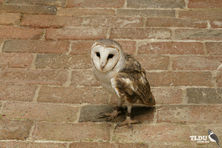
Shoppers Feedback:
Jan 17, 2017
Hello Ros,
I have now paid the invoice, but I would like to write to you just to say a big THANK YOU for getting me the Penguin!
The ChatterMate Penguin became a nice memory for me when I was in New Zealand, and I am so greatful to you for arranging so that I could have it! :-)
Thank you so much!!!!!!!!!!!
Regards,
Malin
Hi Ros,
Many thanks for your very kind email. I really appreciate your prompt reply!
I appreciate your advice regarding the decorations and customs. These are a gift for my daughter’s exchange student family so when she returns home on the weekend I will show her and see if she loves them as much as I do!
Thanks so very much again - I am truly grateful for your kind assistance.
Kind Regards
Bernadette
Ros,
Thanks again for the great customer service. It's a refreshing change!
Best regards,
Trevor
Hey Roz,
Thank you for your emails. Just loved my first order. The cute little Aussie bush critters are going to be used for an office Christmas decoration. My colleagues also liked them and talked about making an order to your site. I'll send you a photo when completed.
I'll be ordering more to send to my daughter's host family in America.
Fabulous service from you.
Kind regards,
Michelle
Thankyou. Order arrived today. One very happy grandson with his new beastly binoculars.
Regards,
Irene
- Home
- Wild Wonders
- Shop
- Aromas of Australia
- Australian Made
- Books
- Book Marks
- Christmas Decoration Sale
- Christmas Decorations
- Clocks
- Drink Holders
- Garden & Outdoor
- Gift Wrapping & Cards
- Home & Giftware
- Jewellery
- Keyrings
- New Products
- Pencils & Pen Holders
- Photo Frames
- Plush Toys
- Plush with Sound
- Sheepskin Rugs
- Stationery
- Stone Carvings
- Toys & Games
- Travel Goods
- Wedding
- Wild Figurines
- Wildlife Safety Products
- Wind Chimes
- Wine Charms
- View All Products
- Wildlife
- Australiana
- Explore
- Contact Us
Pacific Barn Owl

Quick Facts
| Length: | 34 cm |
| Height: | - |
| Weight: | - |
| Colour: | Heart shaped facial disk, sandy orange and light grey upperparts and white/cream underparts |
| Habitat: | Open, often arid country such as farms, heath and lightly wooded forest |
| Food: | Small mammals, mainly rodents - preferred food the House Mouse, birds and some insects, frogs and li |
| Predators: | - |
| Status: | - |
Barn Owls are moderately common, but generally hard to see, as they are mostly active at night. During the day, the birds roost on concealed tree branches. They are the most widespread and familiar of the owls. Barn Owls are medium sized birds (females slightly larger than males), with a 'heart-shaped' facial disc. They have sandy orange and light grey upperparts and white to cream underparts. Both the back and breast are evenly spotted with black. Birds often appear whiter than normal when illuminated in car headlights or torches. Young birds are similar to adults in plumage. When threatened, the Barn Owl crouches down and spreads its wings.
Barn Owls, are smaller and generally lighter in colour than Masked Owls, (35 cm - 51 cm), which are otherwise similar nocturnal birds (night birds).
The Barn Owl is found throughout Australia. Its distribution is limited only by habitat and food availability.
By day the Barn Owl roosts in hollow logs, caves or dense trees, and is usually seen alone or in pairs. The preferred habitat is open, often arid (dry) country, such as farms, heath and lightly wooded forest.
Barn Owls feed mostly on small mammals, mainly rodents, and birds, but some insects, frogs and lizards are also eaten. One of the more favoured foods is the introduced House Mouse. Barn Owls hunt in flight, searching for prey on the ground using their exceptional hearing. The heart-shaped structure of the facial disc is unique to these types of owls. The slightest sound waves are channelled toward the ears, allowing the owl to pinpoint prey even in complete darkness.
Barn Owls have no definite breeding season. Breeding takes place mostly in response to food availability and often twice per year. The nest is normally a hollow in a tree, but birds sometimes nest in caves or abandoned buildings. The entrance hole is usually 15 to 25 m above the ground, though the nest chamber may be up to 10 m down inside the tree. No nest material is used, except a few old pellets, which are the regurgitated indigestible leftovers of small mammals and other prey.
The pale white eggs are laid at two-day intervals. The female alone incubates the eggs, but both parents care for the young. The young will perch in the vicinity of the nest site and be fed by the adults for a further month or so after leaving the nest.
Subspecies of the Barn Owl are found on every continent in the world except Antarctica.
Last Updated: Thursday 18th July, 2013
BirdLife Australia - www.birdlife.org.au
BUSH e-TELEGRAPH
Signup for our monthly newsletter the "e-Telegraph"
Quick Links
Home | The Beginning | About The Land Down Under | Wild Wonders | Advertise on Wild Wonders | Christmas Decoration Sale | Christmas Tree Decorations | Drink Holders | Plush with Sound | Stone Carvings | Wildlife Wine Charms | Freebies | Australian Wildlife | Help Our Wildlife | Australiana | Photo of the Month | Explore The Land Down Under | Contact Us | Legal Notices


